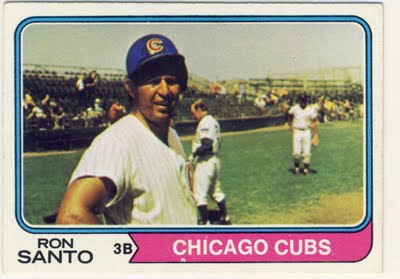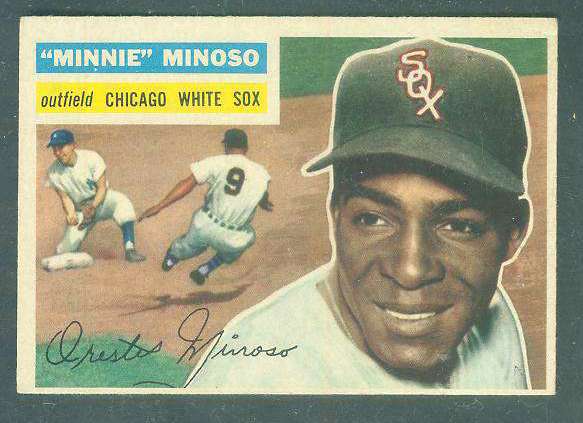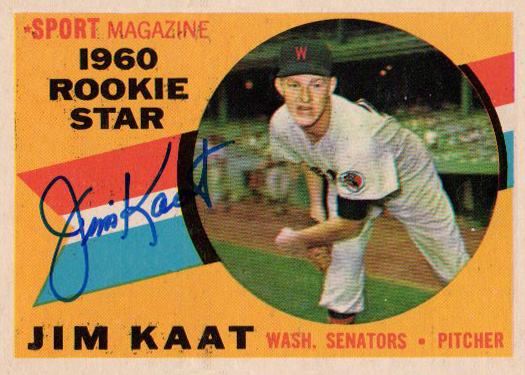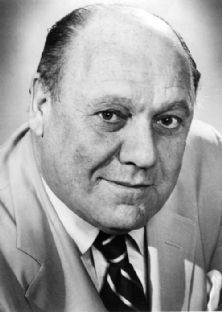By The Common Man
The ballot for the Hall of Fame Veterans Committee was released this week, with ten names on the list. Each would need twelve of the 16 members of the Veterans Committee to vote for them to be elected. The list is full of interesting players and officials who, even if they don’t deserve enshrinement, do deserve to have their great careers remembered. Here’s how The Common Man would vote:
Yes!
Ron Santo, 3B
Qualifications: .277/.362/.464, 125 OPS+, 342 homers, 9-time All Star (4 starts), 5 Gold Gloves, 66.4 rWAR)
Santo is incredibly overqualified for the Hall of Fame. It’s a travesty that writers never gave him more than 43% of their votes. Santo was hurt by playing for losing teams in a difficult era for offenses, and because his two greatest skills, his patience and his defense, weren’t properly appreciated, especially since his career spanned the era that featured Brooks Robinson, Mike Schmidt, and the Boyers, all of whom were probably better fielders. But make no mistake, Santo was excellent with the leather. And he had great power for the era.
Obviously the end of his career hurts him. Santo debuted, and stuck, at just 20 years old, and proved excellent for the next 14 years. But the Cubs tried to trade him after 1973 to the California Angels, and Santo became the first player to invoke his 10-and-5 rights. Instead, if they were going to move him, Santo demanded that he be dealt to the White Sox. The Sox took Santo, but already had a 3B they liked more in Bill Melton. Santo started the year at DH, and would also work out as the second baseman, but neither proved a good fit. His season was a disaster as he hit .221/.293/.299. Santo told reporters “When I was pinch-batted for early last June, I felt even then it was time I should get out of baseball.” He was only 34 years old. If he had had a more traditional decline phase, it would have hurt his overall rate stats, but he would have been able to add homeruns and hits to his totals, and would not have left the league with such a bad taste in its mouth.
Still, even with the horrible end, Santo is easily in the top 10 third basemen of all time. The Common Man would (and will, this offseason) only rank Schmidt, Mathews, Boggs, Brett, and Chipper as definitely ahead of him. And according to WAR, Santo ranks in the top quarter of hitters in the Hall of Fame today. That should be good enough criteria for anybody.
Minnie Minoso, Outfield
Qualifications: .298/.389/.459, 130 OPS+, 186 homers, 1963 hits, 205 stolen bases, 7 All Star Games (4 starts), 3 Gold Gloves, 52.8 rWAR
Minnie Minoso was a tremendously talented player who could do almost everything on the baseball field (although he seems to have been terrible at stealing bases, 61% for his career). He led the league in hits once, triples three times, stolen bases three times (caught stealings six times), total bases once, and hit by pitch (Bill’s gonna love this) ten times. He hit for a high average and showed a good eye, and had terrific line drive power.
Like Santo, Minoso’s career was over too soon (which is strange, considering (as Bill pointed out to me) it technically lasted six decades). Minoso was actually finished as a regular at just 35, and only really had 11 years as a Big League starter. Part of that is because he was Cuban, and got a relatively late start in organized ball. Also, he was originally a third baseman, and the Indians already had Ken Keltner and three good outfielders. So Minnie destroyed AAA pitching in the PCL for a couple years before getting his break at 25.
There is some speculation that Minoso’s race hurt him. This is in part because there’s a legitimate question about Minoso’s true age, and because he played in the Negro League from 1945-1948. He originally claimed to have been born in 1922, so that he could get into Cuban army. But since then, in his memoir, he claimed he actually had been born in 1925. His original team, the Indians, were among the forerunners of adding black and Latino players in the 1940s, and Minoso would have been welcomed there if he had beaten out Keltner or one of the outfielders. If we’re generous, we could give him one extra season in the Majors based on his race if he was born in 1925. But if he were born in 1922, Minoso wouldn’t have started his Major League career in earnest until he was 28, and that’s a huge impediment based on his race. TCM’s a big hall guy, so he’d probably support Minoso either way, but he also thinks a lot depends on when Minoso was really born.
Luis Tiant, Pitcher
Qualifications: 229-172, 3.30 ERA, 115 ERA+, 3 All Star Games (1 start), 60.1 rWAR
El Tiante was usually good and occasionally incredible. His best season was undoubtedly with the Indians in 1968, when he won 21 games and led the AL in ERA (1.60) and ERA+ (186), giving up just 5.3 hits per 9 and striking out more than a batter per inning. He followed that with three disappointing and injury filled campaigns with the Indians, Twins and Red Sox in turn (during which time the Twins got him for a year for four players, one of whom was Graig Nettles, grrr). Anyway, Tiant came back in a big way for the Sox in 1972, when he served as a swingman and won 15 games and the AL ERA title (1.91). After that, he’d win twenty games three times in four years for the Sox, posting strong ERAs in all three of those seasons. He continued to be productive after that, but gradually slowed down as he approached and passed 40.
The knock against Tiant is probably his relatively low win total and career ERA+. But the sum of his career value easily puts him in the top 30 pitchers since 1900, and probably the top 25 since he was almost never bad, and frequently mind-blowingly excellent. If TCM is being true to his big Hall-ness, Tiant’s clearly deserving. Even if you want a smaller Hall, you’ll have to explain why El Tiante is less deserving than Dazzy Vance, Whitey Ford, Early Wynn, and plenty of others (with the understanding that win totals are a crappy way to judge pitchers).
NO!
Gil Hodges, 1B-MGR
Qualifications: .273/.359/.487, 119 OPS+, 370 homers, 44.6 WAR, 660-753 record as manager, one World Championship, 8 All Star Games (1 start), 2 Gold Gloves, 44.6 rWAR
The Common Man has never really understood the case for Gil Hodges. He hit forty homers twice, and was a good power hitter for a little while, and he had good patience. He also, however, played a premium offensive position at 1B, and stopped being productive at 35. His best years coincide exactly with the Dodgers great run in the early 1950s, but by the end of the decade he was just above replacement level. And while he managed the Mets to a championship in 1969, he had a short managerial career, a losing record, and the third worst winning percentage of any manager to win the Fall Classic (behind Rogers Hornsby and Fred Haney). There is simply no real evidence that he was a great manager, aside from the fact that he was at the helm of one of baseball’s most famous teams. Frankly, if he had won his World Championship with the Pirates, no one would be clamoring for his inclusion today.
His case rests on being very famous, well-liked, and dying young (at 47). Frankly, that shouldn’t be enough. Gil Hodges was a very good player, and much beloved. He may have been a good manager, but we can’t really prove that. And we really shouldn’t let guys in on a hunch and because he gave us the warm fuzzies. That’s the kind of thinking that got Ross Youngs elected.
Allie Reynolds, Pitcher
Qualifications: 182-107, 3.30 ERA, 110 ERA+, 5 All Star Games, postseason success, 29.0 rWAR
Reynolds had exactly one great season, in 1952, when he won 20 games, led the AL in ERA, shutouts, and strikeouts. Otherwise, he was an above average pitcher who benefitted disproportionately from his time on the Yankees in the late 1940s and early 1950s. He had great success in the World Series as well, winning seven games against two losses, and posting a 2.79 ERA in 77 innings. He also pitched two no-hitters.
But, like everyone else on this list so far except Tiant, his career was short (just 13 total seasons). And while he was almost always good, he was almost never great. So much of his great winning percentage derives from his terrific teammates. Reynolds was a good pitcher, and should be remembered as such. Not a Hall of Famer.
Tony Oliva, Outfielder
Qualifications: .304/.353/.476, 131 OPS+, 220 homers, 1917 hits, ROY award, 8 All Star Games (3 starts), 42.4 rWAR
Tony O is one of the most beloved players in Twins history. He got a late start at 25, but hit with a vengeance in 1964, leading the American League in batting (.323), runs (109), hits (217), doubles (43), and total bases (374). He also hit 32 homers and drove in 94 runners, and even managed to hit 9 triples. The man was an unstoppable dynamo. He led the league in hits and hitting again the next year, and would led the AL in hits and doubles three other times as well. He won another batting title in 1971 and led the league in slugging that year too. There is absolutely no doubt that, if he had been able to remain healthy, Tony Oliva would have been an inner circle Hall of Famer.
But Oliva first had surgery on his right knee in 1965, and then again in 1967 to clean out bone chips. In late June of 1971, Oliva tore ligaments and cartilage but tried to pay through it until September, when he finally had surgery. He tried to come back in 1972, but only managed to get in 10 games before he had to go under the knife again and was lost for the season. When he came back in 18973, he wasn’t the same player and was limited to designated hitter. His power and his speed gone, he declined until 1976, when he just fell off a cliff. Literally every story about Oliva mentioned the agony he was in and his seven knee operations. With an OPS+ of 43, Oliva knew he was done. He quietly slipped away after the season, eventually became the Twins hitting coach, and is now one of the Spanish-language announcers for Twins games.
Oliva officially played 15 years, but only really played 11 full seasons. And while, at his best, he was one of the best players in baseball, he simply didn’t last long enough.
Jim Kaat, Pitcher
Qualifications: 283-237, 3.45 ERA, 108 ERA+,3 All Star Games, 16 Gold Gloves, 41.2 rWAR
Oliva’s former teammate’s case, however, comes down to longevity. Kitty pitched for ever, from 1959-1983, for 6 teams and went from a very good lefty in the young Tom Glavine mode to a junkballing lefty in the old Tom Glavine vein, except nowhere near as good as Tom Glavine. Don't let the win total fool you, Jim Kaat was no Bert Blyleven. Kaat won 20 games three times, and was an absolute workhorse for the Twins in the mid-sixties, leading the AL in starts and innings pitched in 1966, and reprised the roll for the White Sox almost ten years later. He has a ton of Gold Gloves (it’s not clear if he deserved them all or if that should matter much for a pitcher) and a great nickname.
But, let’s be frank, he was rarely dominant. He’s a foundational member of the hall of very good, but never could sustain that kind of success. The bulk of his early career with the Twins was in the offensive dead zone of the late 1960s and 1970s, which helps his raw numbers and masks his true ability. Even if you lop off the five years at the end of his career where he was almost strictly a reliever, he averages 2.1 Wins Above Replacement a year. That, quite simply, isn’t Hall of Fame material.
Ken Boyer, 3B
Qualifications: .287/.349/.462, 116 OPS+, 282 homers, 1 MVP, 7 All Star Games (6 starts), 5 Gold Gloves, 58.4 rWAR
The Common Man has the hardest time with Boyer, who has been tremendously undervalued by history. It probably has a lot to do with his era, because the bulk of Boyer’s production came in the late 1950s and early 1960s. It also comes down, again, to the fact that his defense just didn’t get enough credit when we look at him. But he’s still a tremendous player who was incredibly productive for almost his entire, relatively short, career.
But despite the MVP award, Boyer was mostly consistently excellent, rather than having one huge season to define his career. Moreover, Boyer’s value puts him closer to the Zack Wheats, Richie Ashburns, and Andre Dawsons of the Hall than the true elite. While TCM would probably open his Hall to Boyer eventually, given that 3B are so underrepresented, he’s not quite ready to give in, especially with Santo still on the outside.
Buzzie Bavasi, Executive
Qualifications: Dodgers GM in the 1950s and 1960s, Angels GM in 1980s
It’s not clear why Bavasi deserves to be on this list when his managers exerted so much control over the direction of the Dodgers from 1951-1968. Don’t get TCM wrong, Bavasi undoubtedly was a skilled front office guy, but it’s hard to see what separates him from other great GMs who have yet to get enshrined. Perhaps TCM is selling him short, but before Bavasi goes in, TCM wants to know more about how he influenced the direction of the Dodgers (rather than just milking what Branch Rickey left him), and also get a sense of what other Major League GMs we should look at first.
Charlie Finley, Owner
Qualifications: Owned Kansas City and Oakland A’s from 1960-1981
Finley was damn near everything they said he was. A great judge of baseball talent. A maverick. A cheapskate. A pest. A genius. And a moron. Finley’s A’s won five straight division titles from 1971-1976, and won three straight World Series from 1972-1974. Finley deserves a lot of credit for putting that roster and management team together. He also deserves all of the blame for the disintegration of that team, from the way he treated players, to his refusal to play the free agent game, to his fights with the league and managers. Charlie Finley, even today, might be the worst thing to ever happen to baseball in Oakland, even though he was responsible for bringing it there. And despite the fact that he gave MC Hammer his first job (Hi Hammer!), Charlie Finley does not belong in the Hall of Fame any more than Charlie Comiskey does.











7 comments:
We're pretty much in agreement (mine here), except that I do go ahead and give the nod to Ken Boyer. He very well might be a Top 10 third baseman.
We're pretty much in agreement (mine here), except that I do go ahead and give the nod to Ken Boyer. He very well might be a Top 10 third baseman.
I think with Boyer, you have to look at him positionally. Which is not a word I see, but we'll go with it anyway. The real question isn't is Boyer in the top ten percent of all players, but in the top ten percent of third basemen. That may change your thinking. Or it may not. I can't disagree with too much else here.
I've actually been toying around with an idea for a while, that perhaps Hall of Fame selection can be looked at numerically. As Bill James points out, at the end of a player's career, his hits, secondary bases, and R+RBI are all about the same (look at George Brett if you want to see it in action to an extreme degree). Anyway, I've been messing around with those three as a rate stat (just add them together and divide by AB, then divide by 3 so it looks like a batting average). Anyway, if you square that number and you multiply it by the square root of a playing time component (which is the number of seasons a player played average with a PA-based number, I won't get into it here - if you want to know, check out my blog), you basically see that the BBWAA seems to have very strict standards by which they judge players, even if it is arbitrary and based on very basic stats, and of course that number is a floating target depending on position. What you also find out (even if, in our hearts, we always knew it anyway) is that that Veterans' Committee is more or less arbitrary in terms of who gets in. And finally, you discover that guys like Ron Santo maybe aren't that qualified, at least in the way the BBWAA looks at him (although he does come out better than Wade Boggs, but only marginally). Anyway, what it says is basically that none of them would get chosen by the BBWAA (which of course they weren't), but that some of them are better choices than others. For example, Minoso comes out ahead of Jim "Everyone's (Justifiably) Favorite Whipping Boy" Rice, and by quite a nice margin. Boyer's better than any Vet Committee 3B, as is Santo, but both would be middle-of-the-pack when considering both Vet Committee guys and the BBWAA players. Hodges would be on the low side for 1B, and Oliva doesn't belong in the discussion, although he does score marginally better than Ross Youngs. I don't know if that's interesting to anyone by me, but I thought the sabermetrically-minded community (of which I consider myself a part) might like a look through the eyes of a Hall voter, most of whom only look at the "traditional" stats.
Also, sorry for the super long comment, but forgive me, as it's my birthday. And also, the system I displayed is not something I actually advocate for determining Hall of Famers - it's just an attempt to see what it might look like if we came up with a "one number" way to look at Hall of Famers, so don't misunderstand me on that.
If we ever start evaluating Hall of Fame candidacies based on one number (and I certainly hope we don't), it better be some version of WAR.
I'd add in Boyer as well. Just because Santo isn't in yet doesn't mean you can't support both. Granted, Santo should go in first, but Boyer has to build up support somehow; may as well start now.
Otherwise, your ballot is more or less how I would vote. I just wish the Hall could put together a Veterans Committee that could strike the right balance between Frankie Frisch's "let everyone in" policy and their more strict recent incarnations.
Post a Comment